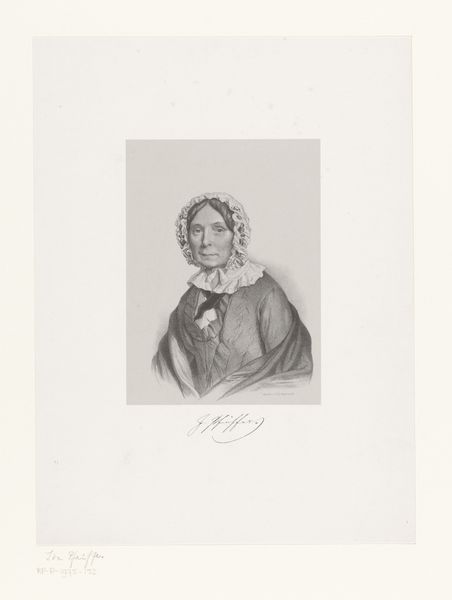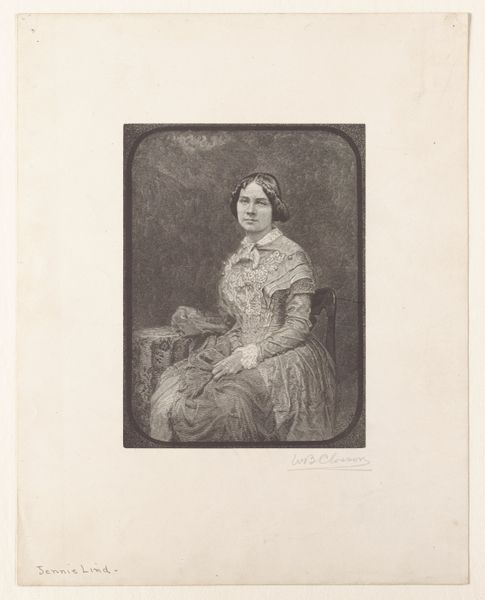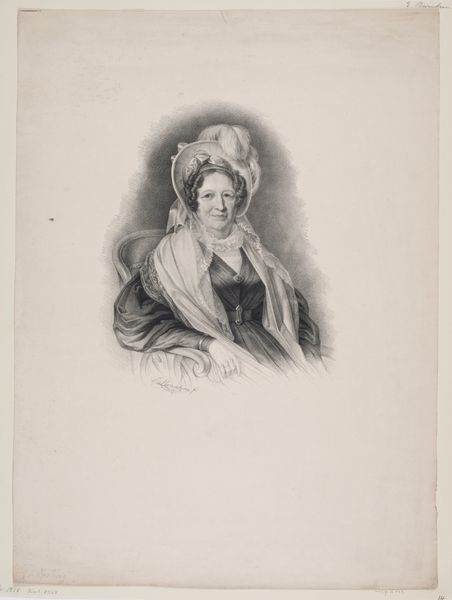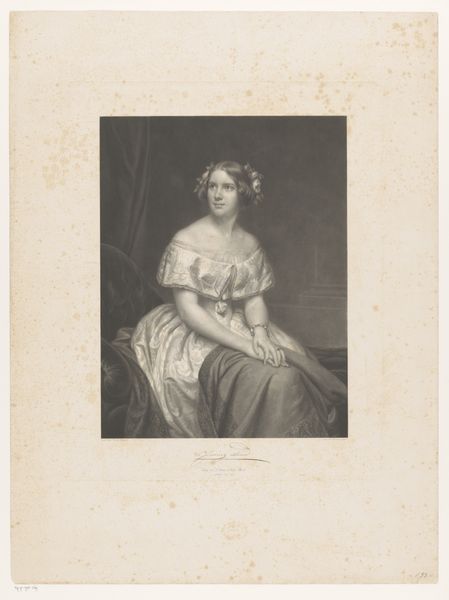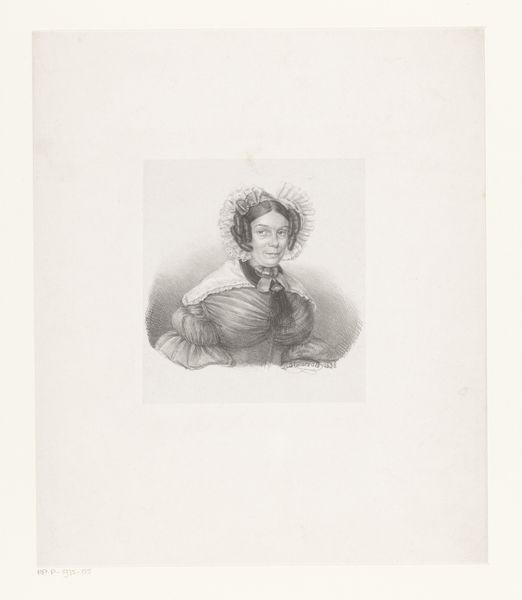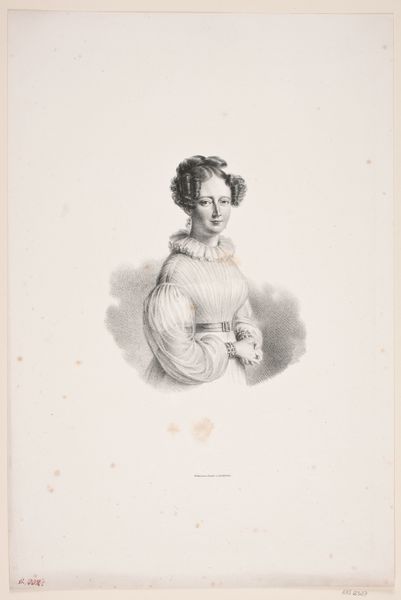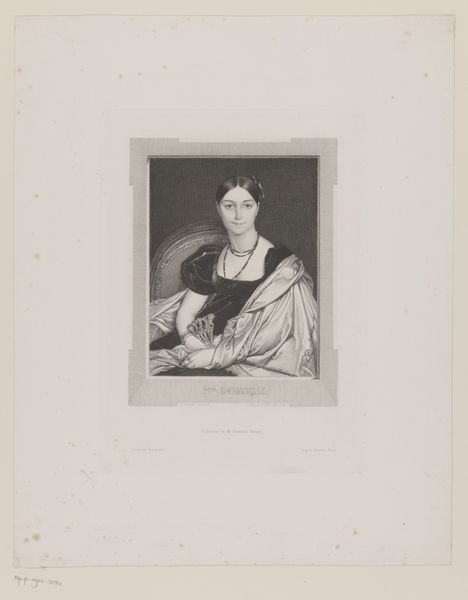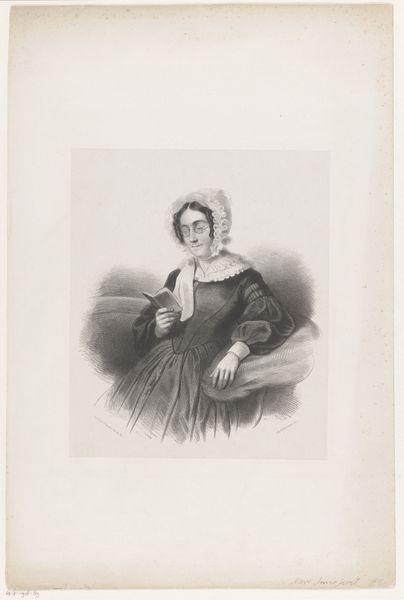
Dimensions: height 485 mm, width 354 mm
Copyright: Rijks Museum: Open Domain
This lithograph of an unknown woman was created by Willem Troost, a Dutch artist who lived in the 19th century. The medium itself, lithography, is critical to understanding the work. It involves drawing on a stone or metal plate with a greasy crayon, then applying ink which adheres only to the drawn areas. The resulting print has a distinctive look; softer and more tonal than an engraving, almost like a pencil drawing. This was a relatively new technology at the time, enabling the mass production of images. Consider the implications for portraiture. Previously, only the wealthy could afford a painted likeness. Lithography democratized the genre, offering a more accessible option to the middle class. Yet, even with this technological advance, the image still carries an aura of exclusivity. The sitter's refined dress and composed demeanor speak to a particular social standing, reminding us that access to representation, even in a modern age, remains stratified. So, the next time you look at a print, consider not just the image, but also the process and the social context that made it possible.
Comments
No comments
Be the first to comment and join the conversation on the ultimate creative platform.

